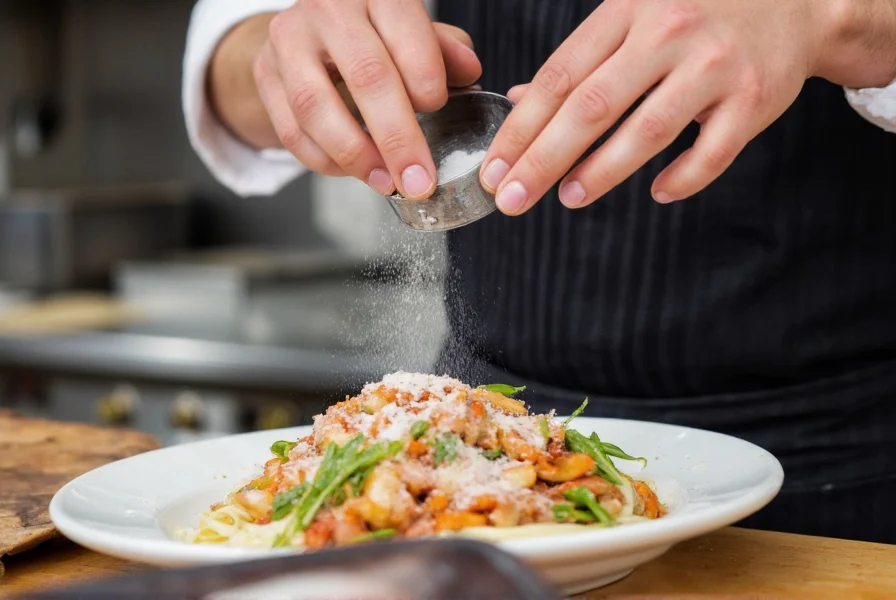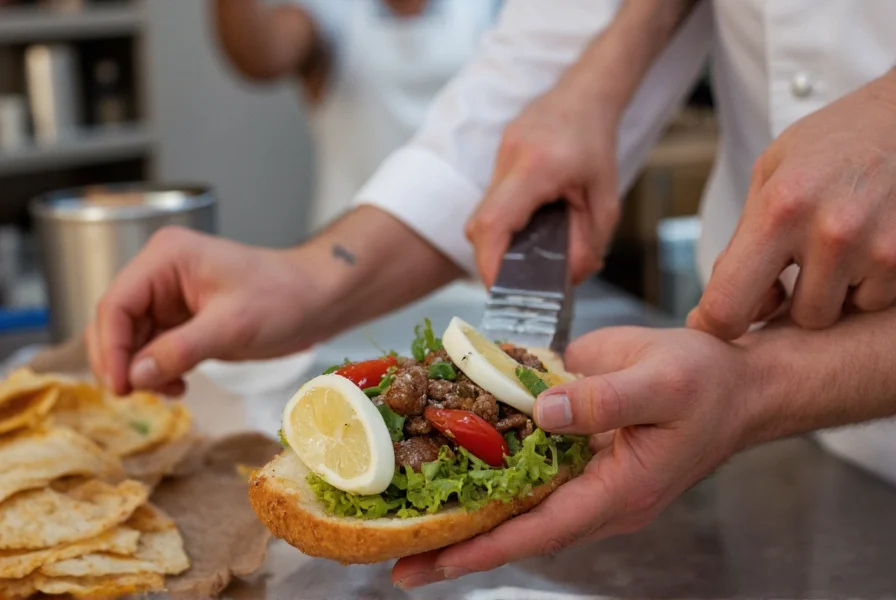When home cooks ask about a "salt and pepper chef," they're often seeking insight into the professional approach to these basic yet critical seasonings. The reality is that every accomplished chef is, in essence, a salt and pepper expert—mastery of these fundamentals distinguishes exceptional cooking from ordinary meals. Proper seasoning isn't just about adding flavor; it's a precise culinary science that transforms ingredients and balances dishes.
The Critical Role of Salt in Professional Cooking
Salt serves multiple functions beyond simple flavor enhancement. Professional chefs understand that salt affects texture, moisture retention, and even the chemical structure of proteins. When applied correctly during different cooking stages, salt can:
- Draw out moisture from vegetables before sautéing
- Break down muscle fibers in meats for improved tenderness
- Enhance natural sweetness in fruits and vegetables
- Balance acidity in tomato-based sauces
- Activate flavor compounds that remain dormant otherwise
Timing matters significantly. Chefs know that salting meat hours before cooking allows for better penetration and moisture retention, while adding salt at the end provides a bright, clean finish. This nuanced understanding of proper salt and pepper seasoning techniques separates professionals from casual cooks.

Understanding Culinary Pepper Beyond Basic Seasoning
While salt provides foundational flavor enhancement, pepper offers complexity and dimension. Professional chefs recognize that pepper isn't just black peppercorns from a grinder. They utilize various pepper types strategically:
| Pepper Type | Flavor Profile | Best Applications |
|---|---|---|
| Black Peppercorn | Pungent, woody, slightly floral | Meats, hearty sauces, finishing dishes |
| White Peppercorn | Milder, earthier, less complex | Cream sauces, light-colored dishes |
| Green Peppercorn | Fresh, herbal, slightly tart | Fish, salads, fruit dishes |
| Sichuan Peppercorn | Citrusy, floral, numbing sensation | Asian cuisine, spice blends |
Knowing when to add salt in cooking process and which pepper variety to use demonstrates a chef's seasoning expertise. Freshly cracked pepper provides volatile aromatic compounds that pre-ground pepper lacks, which is why professionals never rely solely on pre-ground options.
Professional Salt Selection: Beyond Table Salt
Professional kitchens maintain multiple salt varieties, each serving specific purposes. Understanding different types of culinary salts is essential knowledge for any serious cook:
- Kosher salt: Preferred by most chefs for general seasoning due to its clean flavor and easy pinchability
- Sea salt: Used for finishing dishes, with varieties ranging from delicate fleur de sel to robust gray sea salt
- Specialty salts: Like Himalayan pink salt or smoked salts for specific flavor profiles
- Curing salts: For preservation techniques requiring precise nitrate levels
The crystal structure and mineral content of each salt affects how it dissolves and distributes flavor. This is why professional chefs never substitute salts interchangeably without adjusting quantities—a critical aspect of professional pepper seasoning methods.
Developing Seasoning Intuition Like a Professional
Home cooks often struggle with seasoning because they lack the developed palate that comes from professional experience. Chefs develop seasoning intuition through:
- Tasting ingredients before seasoning to understand their natural salt content
- Seasoning in multiple stages rather than all at once
- Understanding how salt perception changes with temperature
- Recognizing that different cooking methods require different seasoning approaches
- Learning to identify when a dish needs salt versus when it needs acid for balance
This developing seasoning intuition like a chef process takes time but can be accelerated by mindful practice. The key is to taste constantly and understand how each addition affects the overall flavor profile.

Common Seasoning Mistakes Home Cooks Make
Understanding common salt and pepper mistakes home cooks make helps bridge the gap between amateur and professional results:
- Underseasoning: Fear of making food too salty leads to bland dishes
- Single-stage seasoning: Adding all salt at the beginning or end rather than throughout cooking
- Using the wrong salt type: Substituting table salt for kosher without adjusting measurements
- Over-reliance on pre-ground pepper: Missing out on fresh pepper's complex flavor compounds
- Not accounting for ingredient salt content: Forgetting that stocks, cheeses, and cured meats already contain salt
Professional chefs approach seasoning as an ongoing process rather than a single step. They understand that proper salt and pepper application requires constant evaluation and adjustment throughout the cooking process.
Practical Tips for Home Cooks Seeking Professional Results
Implementing how chefs use salt and pepper effectively techniques at home doesn't require professional training—just attention to detail:
- Keep kosher salt within easy reach while cooking for quick adjustments
- Season in three stages: early in cooking, midway, and final adjustment before serving
- Use a pepper mill with adjustable grind settings for different applications
- Store salts in separate containers with spoons for easy access and measurement
- When in doubt, under-season slightly—you can always add more but can't remove excess
Remember that developing proper seasoning skills takes practice. The difference between good cooking and great cooking often comes down to these fundamental techniques that every professional chef has mastered through repetition and attention to detail.
Frequently Asked Questions
What does 'salt and pepper chef' actually mean?
The term 'salt and pepper chef' doesn't refer to a specific culinary professional. It represents the fundamental seasoning skills that define professional cooking. Mastering salt and pepper application is so essential that all accomplished chefs are experts in these basic yet critical techniques.
Why do professional chefs use multiple types of salt?
Different salt varieties serve specific purposes in professional cooking. Kosher salt is preferred for general seasoning due to its clean flavor and easy pinchability, while sea salts are used for finishing dishes. Specialty salts like Himalayan pink or smoked salts provide unique flavor profiles. The crystal structure and mineral content affect how each salt dissolves and distributes flavor, requiring chefs to select the appropriate type for each application.
When is the best time to add salt during cooking?
Professional chefs season in multiple stages: early in cooking to penetrate ingredients, midway to build flavor layers, and with final adjustments before serving for brightness. For meats, salting hours before cooking improves moisture retention, while vegetables benefit from salting before sautéing to draw out excess moisture. The timing depends on the ingredient and cooking method.
How can I avoid over-salting my dishes?
To prevent over-salting, season in small increments and taste frequently. Remember that salt perception changes with temperature—food often tastes less salty when hot. Account for salt already present in ingredients like stocks, cheeses, and cured meats. When in doubt, under-season slightly—you can always add more salt but cannot remove excess. Using kosher salt helps as its larger crystals make it harder to over-apply compared to fine table salt.
Why do chefs prefer freshly cracked pepper over pre-ground?
Freshly cracked pepper contains volatile aromatic compounds that provide complex flavor and aroma, which dissipate quickly in pre-ground pepper. The grinding process releases these compounds, creating a more vibrant, nuanced pepper flavor. Professional chefs use pepper mills with adjustable settings to control grind size for different applications, ensuring optimal flavor release at the right moment in the cooking process.











 浙公网安备
33010002000092号
浙公网安备
33010002000092号 浙B2-20120091-4
浙B2-20120091-4